Global perspective
Tobacco use still remains one of the biggest challenges our world faces in public health. As the largest preventable risk factor for four major noncommunicable diseases (cancer, cardiovascular disease, diabetes and chronic lung disease), tobacco use contributes greatly to rising health care costs and the loss of economic productivity.
One in 10 deaths around the world is caused by tobacco use. Tobacco is the single greatest preventable cause of death in the world today. It kills over 7 million people every year. Tobacco use continues to grow in developing countries including in Pakistan due to steady population growth, low prices, lack of awareness about its dangers and aggressive tobacco industry marketing efforts. Youth and women are their main targets.
There is no safe level of exposure to secondhand smoke. Secondhand smoke causes death, disease and disability.
Global Adult Tobacco Survey
According to Global Adult Tobacco Survey (GATS 2014), almost 24 million (19.1%) adults currently use tobacco in any form. That accounts for 15.6 million (12.4%) adults who currently smoke tobacco, including 3.7 million adults using water pipe, hookah or shisha, and another 9.6 million (7.7%) adults who use smokeless tobacco.
As per Global Youth Tobacco Survey (GYTS 2013), 13.3% boys and 6.6% girls are current tobacco users. Point of concern is the narrowing of ratio between male and female tobacco users among youth.
Another cause of concern is shisha smoking which is as dangerous as cigarette smoking.
The GATS and GYTS data provide critical information to stakeholders and decision-makers in Pakistan to protect the public’s health and well-being. Addressing tobacco use as a contributing factor for morbidity and mortality in Pakistan will require strong commitment to high-level achievement, including implementation and enforcement of the WHO MPOWER measures.
Pakistan's reports
WHO MPOWER
WHO’s MPOWER is a package of strategies and interventions to reverse the tobacco epidemic while using 6 strategies:
• Monitor tobacco use and prevention policies
• Protect people from tobacco smoke
• Offer help to quit tobacco use
• Warn about the dangers of tobacco
• Enforce bans on tobacco advertising, promotion and sponsorship
• Raise taxes on tobacco
Fighting tobacco in Pakistan will require a strong commitment to the WHO’s Framework Convention on Tobacco Control (WHO FCTC) and the related MPOWER strategies. These are proven strategies that can help avert unnecessary illness and death.
MPOWER
WHO's role
WHO works closely with the Government of Pakistan to curb the use of tobacco in the country. Despite powerful presence of the tobacco industry, 2 major mile stones were achieved in the country:
- Prohibition of Smoking and Protection of Non-smokers Health Ordinance 2002.
- Ratification of WHO Framework Convention on Tobacco Control (FCTC).
Pakistan's key achievements
- Notified Pictorial Health Warning of 85% size on both sides of cigarette packs and outers.
- Ban on smoking in places of public work or use
- Ban on smoking in public service vehicles
- Ban on sale of cigarettes to minor
- Mandatory display of “No Smoking” signs at public places.
- Ban on tobacco advertisements in Print and Electronic Media (through billboard a poster or banner affixed outside a shop, kiosk, or mobile trolley etc.)
- Ban on import of shisha (tobacco and non-tobacco) and related substances.
- Ban on manufacturing, importing and selling of cigarette packs having less than 20 cigarettes
- Ban on free samples, cash rebates, discounts and sponsorship of events.
Way forward
It is now time for Pakistan to fully implement MPOWER Strategies particularly the tobacco control “best buys”: strict implementation of smoke-free laws; a comprehensive ban on tobacco advertisement, promotion and sponsorship; implementing large-sized graphic health warnings on cigarette packs; introducing plain packaging; and raising tobacco taxation.
WHO looks forward to the development of an evidence-based multisectoral plan of action for tobacco control in Pakistan that will pave the way to accelerating implementation of the WHO FCTC and achieving the global target of a 30% relative reduction in prevalence of current tobacco use in persons aged 15 years and over.
Related link
Tobacco data and trends
Global perspective
Tobacco use still remains one of the biggest challenges our world faces in public health. As the largest preventable risk factor for four major noncommunicable diseases (cancer, cardiovascular disease, diabetes and chronic lung disease), tobacco use contributes greatly to rising health care costs and the loss of economic productivity.
One in 10 deaths around the world is caused by tobacco use. Tobacco is the single greatest preventable cause of death in the world today. It kills over 7 million people every year. Tobacco use continues to grow in developing countries including in Pakistan due to steady population growth, low prices, lack of awareness about its dangers and aggressive tobacco industry marketing efforts. Youth and women are their main targets.
There is no safe level of exposure to secondhand smoke. Secondhand smoke causes death, disease and disability.
Global Adult Tobacco Survey
According to Global Adult Tobacco Survey (GATS 2014), almost 24 million (19.1%) adults currently use tobacco in any form. That accounts for 15.6 million (12.4%) adults who currently smoke tobacco, including 3.7 million adults using water pipe, hookah or shisha, and another 9.6 million (7.7%) adults who use smokeless tobacco.
As per Global Youth Tobacco Survey (GYTS 2013), 13.3% boys and 6.6% girls are current tobacco users. Point of concern is the narrowing of ratio between male and female tobacco users among youth.
Another cause of concern is shisha smoking which is as dangerous as cigarette smoking.
The GATS and GYTS data provide critical information to stakeholders and decision-makers in Pakistan to protect the public’s health and well-being. Addressing tobacco use as a contributing factor for morbidity and mortality in Pakistan will require strong commitment to high-level achievement, including implementation and enforcement of the WHO MPOWER measures.
Pakistan's reports
WHO MPOWER
WHO’s MPOWER is a package of strategies and interventions to reverse the tobacco epidemic while using 6 strategies:
• Monitor tobacco use and prevention policies
• Protect people from tobacco smoke
• Offer help to quit tobacco use
• Warn about the dangers of tobacco
• Enforce bans on tobacco advertising, promotion and sponsorship
• Raise taxes on tobacco
Fighting tobacco in Pakistan will require a strong commitment to the WHO’s Framework Convention on Tobacco Control (WHO FCTC) and the related MPOWER strategies. These are proven strategies that can help avert unnecessary illness and death.
MPOWER
WHO's role
WHO works closely with the Government of Pakistan to curb the use of tobacco in the country. Despite powerful presence of the tobacco industry, 2 major mile stones were achieved in the country:
- Prohibition of Smoking and Protection of Non-smokers Health Ordinance 2002.
- Ratification of WHO Framework Convention on Tobacco Control (FCTC).
Pakistan's key achievements
- Notified Pictorial Health Warning of 85% size on both sides of cigarette packs and outers.
- Ban on smoking in places of public work or use
- Ban on smoking in public service vehicles
- Ban on sale of cigarettes to minor
- Mandatory display of “No Smoking” signs at public places.
- Ban on tobacco advertisements in Print and Electronic Media (through billboard a poster or banner affixed outside a shop, kiosk, or mobile trolley etc.)
- Ban on import of shisha (tobacco and non-tobacco) and related substances.
- Ban on manufacturing, importing and selling of cigarette packs having less than 20 cigarettes
- Ban on free samples, cash rebates, discounts and sponsorship of events.
Way forward
It is now time for Pakistan to fully implement MPOWER Strategies particularly the tobacco control “best buys”: strict implementation of smoke-free laws; a comprehensive ban on tobacco advertisement, promotion and sponsorship; implementing large-sized graphic health warnings on cigarette packs; introducing plain packaging; and raising tobacco taxation.
WHO looks forward to the development of an evidence-based multisectoral plan of action for tobacco control in Pakistan that will pave the way to accelerating implementation of the WHO FCTC and achieving the global target of a 30% relative reduction in prevalence of current tobacco use in persons aged 15 years and over.
Related link
Tobacco data and trends








